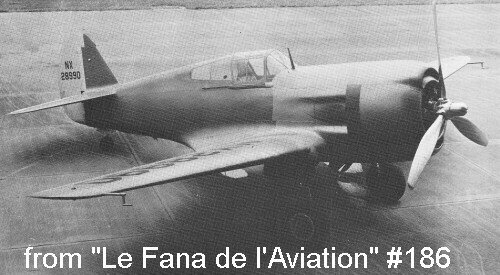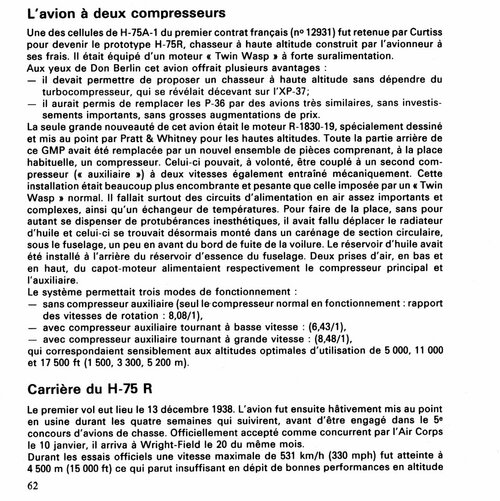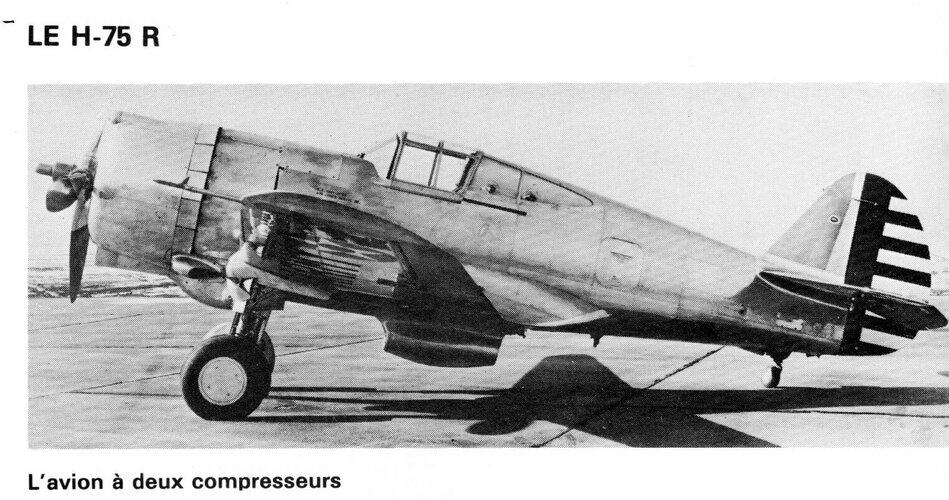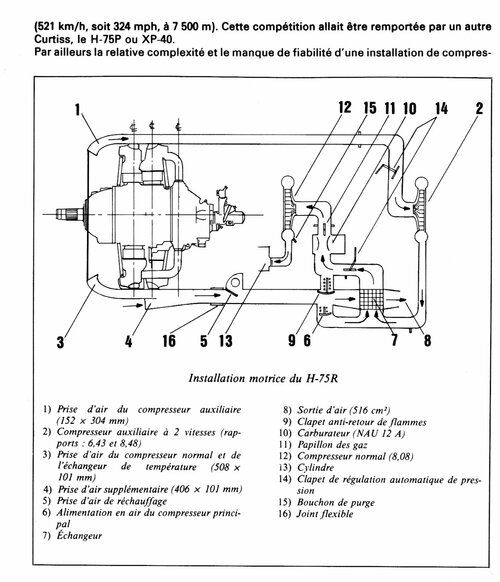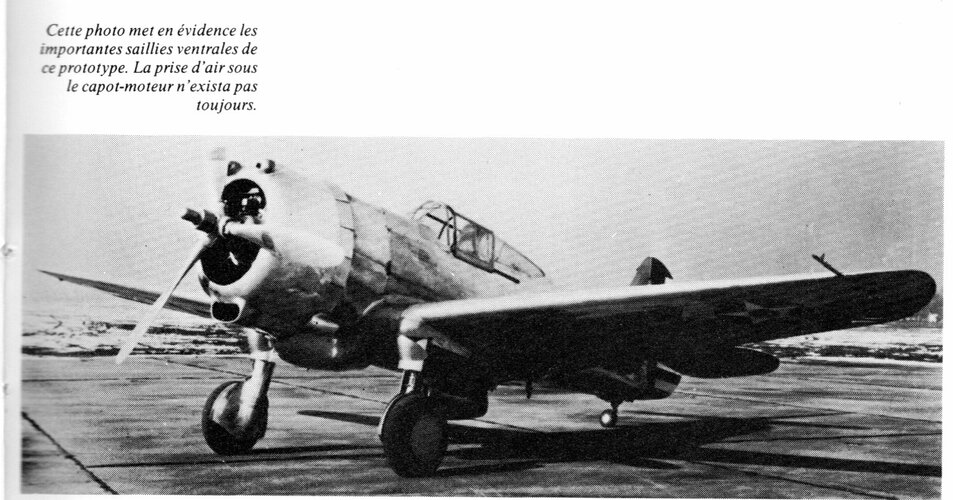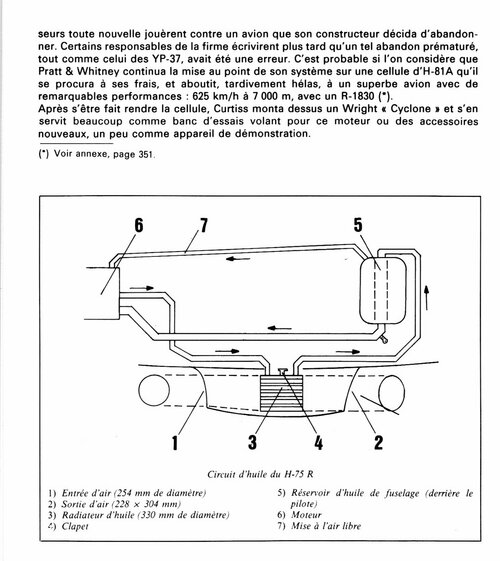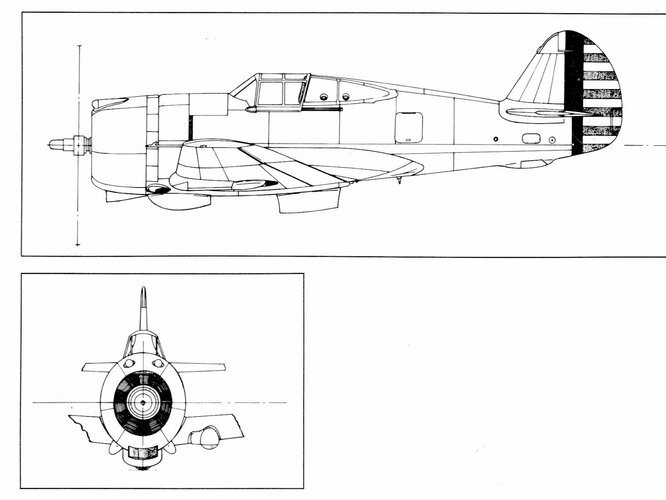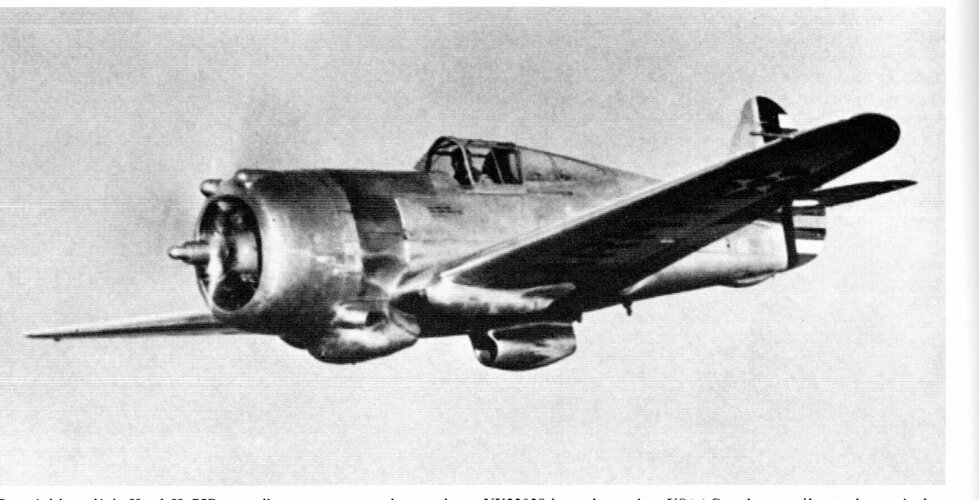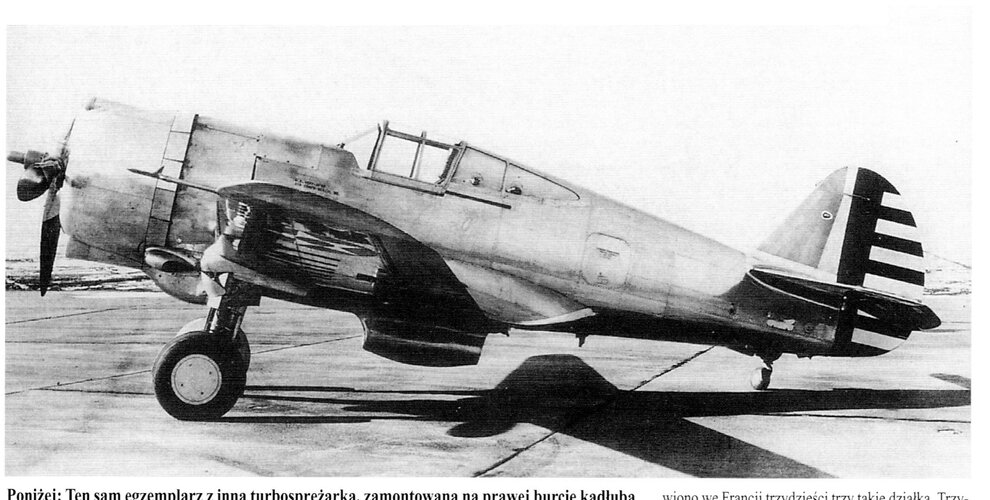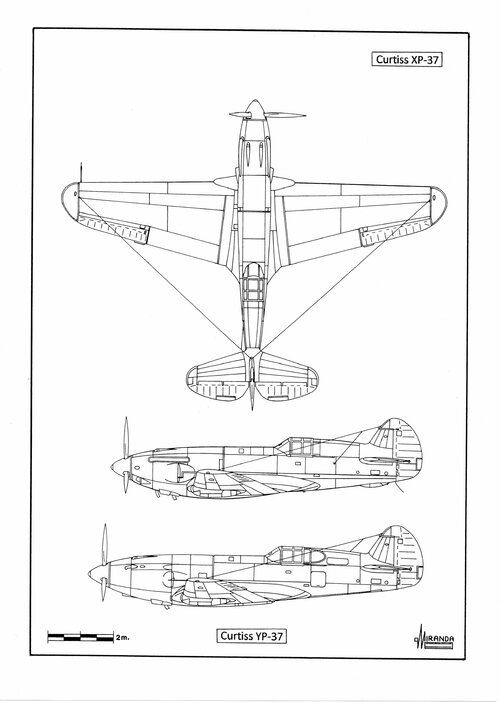As Jon noted in the post directly above yours, this re-engining exercise was a Pratt & Whitney project, not a Curtiss job.
Curtiss did experiment with the same GE turbosupercharger used in the P-38 - in the Allison-powered YP-37 prototype. A major problem was the excessively close proximity of the turbo to the exhaust ports directly in front. At this stage of their development, turbosuperchargers needed distance to adequately cool exhaust gases. The P-38's layout lent itself to providing that distance.
- In February 1937 the USAAC contracted with Curtiss the installation of one advanced Allison V-1710-11 turbo-supercharged V-12 engine in the H75 B airframe. To make room for the experimental B-1 exhaust-driven turbo-supercharger, including the compressor, the Prestone intercooler and heavy tubing system, the cockpit was pushed very far to the rear, resulting in poor visibility during take offs and landings.
The extensively modified prototype, redesigned XP-37, was flown on April 1937 reaching 340 mph at 20,000 ft, but suffered frequent turbo-supercharger malfunction and tail plane flutter, the performance fell short of expectations.
On 11 December 1937 the USAAC ordered thirteen service test airplanes under the designation YP-37. These pre-production machines were fitted with elongated fuselages and Allison V-1710-21 engines with improved G.E. B-2 turbo-superchargers.
The first YP-37 flew on June 1939.
Although the new turbo-supercharger was quite troublesome, the YP-37 remained in experimental service until 1942.
Curtiss XP-37 technical data
Power plant: one 1,150 hp Allison V-1710-11, twelve cylinder, Vee, liquid-cooled engine with General Electric B-1 turbo-supercharger, wingspan: 37.33 ft (11.38 m), length: 30.46 ft (9.2 m), height: 10.5 ft (3.2 m), wing area: 235.94 sq. ft (21.92 sq. m), max speed: 349 mph (547 kph), max weight: 6,700 lbs (3,035 kg), service ceiling: 32,750 ft (9,984 m), armament: one 0.50 cal and one 0.30 cal nose mounted machine guns.
Curtiss YP-37 technical data
Power plant: one 1,150 hp Allison V-1710-21, twelve cylinder, Vee, liquid-cooled engine with General Electric B-2 turbo-supercharger, wingspan: 37.33 ft (11.38 m), length: 33.83 ft (10.3 m), height: 10.5 ft (3.2 m), wing area: 235.94 sq. ft (21.92 sq. m), max speed: 331 mph (532 kph), max weight: 7,167 lbs (3,255 kg), service ceiling: 34,000 ft (10,366 m).
The development of the P-37 high-altitude interceptor was discontinued in favour of a less complex conversion of the P-36 for the Allison engine.
In July, Curtiss got USAAC permission to install in the P-36A s/n 38-10 one V-1710-19 engine, with single-stage, single-speed engine driven supercharger.
The project had the designation Model 75 P (XP-40).

